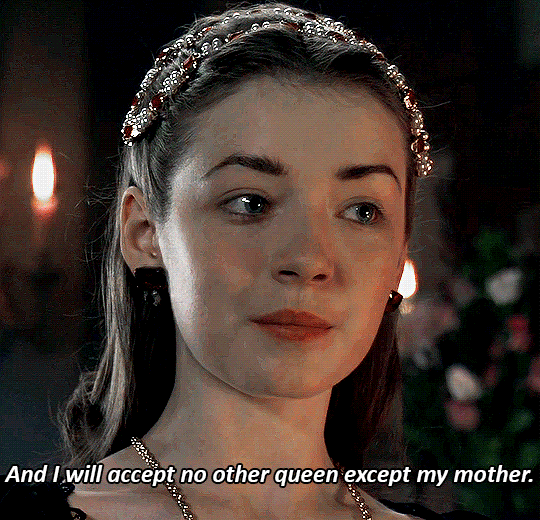Text
X Men 97: Bastion’s Plan Explained
youtube
I HIGHLY RECOMMEND this YouTube channel too. He also knows his s**t and not only that, he knows plenty of other lores and does great breakdowns.
7 notes
·
View notes
Text
X-MEN 97 EPISODE 7 FULL Breakdown, WTF Ending Explained, Cameo Scenes an...
youtube
Few YouTubers I like, Emergency Awesome is one of them. Even when I don't wholly agree with his other takes, I will still say he knows his s**t because he does.
2 notes
·
View notes
Photo


On Saturday 21st of April 1509, Henry VII died at Richmond Palace. He was the first monarch of the Tudor dynasty and while he has been eclipsed by his larger than life son, Henry remains one of the most fascinating figures of the modern era.
“The reality of Henry Tudor’s ascent to the throne –his narrow escapes from death, his failures and anxieties, complete with constant uncertainty of his situation … was a far less welcome tale. It remains nonetheless just as remarkable; against all the odds, at Bosworth Henry achieved victory that he should not have won.” (Skidmore)
He created a new symbol called the Tudor Rose which was nothing more than a device, an alternate tale to explain the roots of the conflict known today as the “wars of the roses”. The wars was a more complex conflict than what we are told and involved as many players as we can imagine. The warring Houses known as Lancaster and York, had many sigils. The white and the red rose where the emblems chosen by Henry Tudor to represent both Houses to give a new narrative of this conflict. It was an effective device that would become to represent not just the union of both Houses that came about with Henry VII’s marriage with Elizabeth of York, but of his descendants. On January 1559, fifty years after his death, his granddaughter, Elizabeth I rode from the Tower of London to Westminster on the eve of her coronation, and on her way she encountered five pageants, one of which showed “two personages representing King Henry the Seventh and Elizabeth his wife, daughter of King Edward the Fourth” seated together, above each head was the red rose and white rose respectively “out of which [these] two roses sprang two branches gathered into one, which were directed upward to a second stage wherein was placed one representing the valiant and noble prince King Henry [VIII]”.
Clearly, the Tudor rose was seen not just as a validation to his descendants’ right to the throne, but as something preordained by God, something that told the people that with them, the wars of the roses had come to a close, and peace had finally reigned in England. Whether this was true or not, and nobles believed it or not, is up to dispute. But nobody can deny that it was an effective piece of propaganda that convinced the people that war had come to an end, and that this new dynasty would bring them peace and prosperity. Tudor and Elizabethan literature helped a great deal when they continued to use this device to explain the reasons behind the conflict, reducing it to a dynastic conflict between two warring houses.
“The frontispiece was such a popular motif that it was repeated and reused on other, unconnected works: the same family tree appeared unmodified in John Stow’s 1550 and 1561 editions of Chaucer’s works, introducing the section on the Canterbury Tales. Just as John, Duke of Bedford, had plastered occupied France with genealogies advertising the legitimacy of the joint monarchy during the 1520s; just as Edward IV had obsessively compiled genealogies tracing his rightful royal descent from centuries long gone; so too did the Tudors drive home the message both of their right to rule and of their version of history. By Elizabeth’s reign the mere sight of red and white roses entwined was enough to evoke instantly the whole story of the fifteenth century: the Crown had been thrown into dispute and disarray by the Lancastrian deposition of Richard II in 1399; this had prompted nearly a century of warfare between two rival clans, which was a form of divine punishment for the overthrow of a rightful King; finally in 1485, the Tudors had reunited the families and saved the realm. It was that simple.” (Jones)
And yet all of Henry’s hard work, to maintain stability in his new realm, his marriage and his family, suffered a huge setback when his eldest son and beloved heir, Arthur Tudor, Prince of Wales and Lord of Snowdonia died as a result of the plague in early April 1502. He and his wife were utterly devastated. “The shadow cast by Arthur’s death” writes Dan Jones “was long and dark” but not as dark as historians Amy Licence and Alison Weir add, that of Elizabeth of York’s death a year later. Their deaths were too much for the aging King, who began to isolate himself from the public, coming out only for state occasions. When Henry’s condition worsened, his mother (Margaret Beaufort, Countess of Richmond) who was sick herself, ordered that her son be moved to Richmond that March.
“Her hands, now cramped with arthritis, were so painful that she would sometimes cry out ‘Oh Blessed Jesus help me!’ But to watch her son suffer was so much worse. The dying King sobbed as he reflected on the lives he had ruined. His last agonies began at about 10 pm Friday 20 April.” (de Lisle)
Margaret brought her confessor, John Fisher, to hear his confession and give him his last rites. And then on the morning of April 21st, Henry died.
She immediately began to make preparations for her grandson’s coronation and kept the King’s death a secret for three days. She organized a meeting with his councilors and co-executors at his will at Greenwich to discuss, among many things, her son’s burial and the upcoming regency during her son’s short minority. Henry VIII was not yet eighteen and Margaret wanted to make sure that he was safely installed in his throne, before he took on the reins of government. Margaret had great experience in this since she had been a child of nine attending the court of her cousin, Henry VI, to repudiate her betrothal to de la Pole. The meeting took place on the celebration of the Order of the Garter –an Order she was a member of. Her grandson was present and while he was anxious to start his new reign, he recognized his grandmother’s experience, and respected her authority. Later that night, Henry’s death was announced and sadly (at least to Margaret, it must have been) nobody mourned his death and according to contemporary chroniclers, they greeted his death with celebration. To many historians, Thomas Penn included, Henry VII is a miserly figure who was consumed by darkness of his own making and who will forever be remember as a somber and cold figure. But this, as Linda Porter in her recent biography of the Tudors and Stewarts points out, is “an unfair assessment”.
“He was comely personage, a little above just stature, well and straight-limbed, but slender. His countenance was revered, and a little like a churchman, and as it was not strange or dark so neither was it winning or pleasing, but as the face of one well disposed. But it was to the disadvantage of the painter, for it was best when he spoke.”
Although written over a century after his death, Francis Bacon’s description of the first Tudor King, is right on the spot. Linda Porter adds:
“[He was] A considered person, not given to great public displays of emotion, somewhat ascetic in appearance, not exactly handsome but with an interesting and by no means unattractive face, the whole man only at his most appealing when he was animated. His portraits show that he did, indeed, have something of the churchman about him: a calm and also inscrutability, a sense that you would never entirely know that he was thinking. It gave him an air of authority.”
Henry VII was an energetic young man at the time of his exile, yet he was also controlled and cautious as the descriptions above, provide. He loved to laugh, joke and gamble but whereas some kings and leaders were known for their vices, Henry was not known to have any. Some of those who met him during his exile, were surprised how someone who had lived and survived through so much, could be so controlled and yet not bitter. When he became King, he kept some of the measures that King Edward IV had introduced, he kept the Star Chamber on a tight leash, terminated private liveries which meant that nobles could no longer have private armies, and defeated the pretender forces of Lambert Simnel who posed as Edward, Earl of Warwick (George, Duke of Clarence and Isabel Neville’s son) and Perkin Warbeck who posed as Richard of Shrewsbury, Duke of York.
Henry never forgot those who had helped him get to where he was and in his last will he names those “lords as well of our blood as other, and also knights, squires and divers our true loving subjects and servants’ who had ‘faithfully assisted us, and divers of them put themselves in extreme jeopardy of their lives, and losses of their lands and goods, in serving and assisting us, as well about the recovery of our Right and Realm of England.’ And in one final tribute to his victory in battle twenty four years before, the dying King requested that a wooden image, wrought with plate of fine gold, should be made, ‘representing our own person … in the manner of an armed man’, to be equipped with an enameled coat of the arms of England and France, together with a sword and spurs. The statue was to be placed kneeling on a silver table, ‘holding betwixt his hands the crown which it pleased God to give us, with the victory over our enemy at our first field.’ The statue was to be dedicated to St. Edward the Confessor, and set in the middle of his shrine, with detailed instructions as to the exact measurements of the statue, so that it would seem as if Henry was almost offering up his crown to St. Edward in thanks.” (Skidmore)
Henry’s body remained in Richmond for two weeks until it was finally laid to rest in Westminster Abbey, inside the Lady Chapel that Henry had ordered constructed for him, his wife and his descendants. He was buried right beside her. Above them, standing a massive golden effigy, representing both of them.
Sources:
· Henry VII by SB Chrimes
· The Winter King by Thomas Penn
· Tudors vs Stewarts: The Fatal Inheritance of Mary, Queen of Scots by Linda Porter
· The Wars of the Roses: The Fall of the Plantagenets and the Rise of the Tudors by Dan Jones
· The Rise of the Tudors by Chris Skidmore
· Tudor. Passion. Manipulation and Murder: The Story of England’s Most Notorious Family by Leanda de Lisle
·
54 notes
·
View notes
Photo

“The land was flowing with milk and honey. On 21 April 1509 the old king, having grown ever more harsh and rapacious, died in his palace at Richmond on the south ban of the Thames. The fact was kept secret for two days, so that the realm would not tremble. Yet the new Henry had already been proclaimed king.
On 9 May the body of Henry VII was taken in a black chariot from Richmond Palace to St Paul’s Cathedral; the funeral car was attended by 1,400 formal mourners and 700 torc…h-bearers. But few, if any, grieved; the courtiers and household servants were already awaiting the son and heir.” –Tudors by Peter Ackroyd
Yet as Chris Skidmore, Dan Jones, and several others have stated, the first Henry Tudor’s ascension was nothing short of astounding. Nobody expected him to become King. Nobody expected he would win, even with Stanley, he was not supposed to win but he did and he went on to reign twenty four years. While Henry VIII’s story is amazing and he certainly stands well on his own, his father also deserves some credit. He secured the Tudor dynasty, in spite of his harsher policies towards the end of his reign, he ensured that his son inherited a rich realm. Later on in life, Henry VIII commissioned a painting on Whitehall, the palace that Wolsey had given to him when the whole Anne Boleyn business and Great Matter was going on to win back his favor. In this painting Henry appeared magnificent as always in spite of his ulcerous leg and his outstanding weigh, above him was his father and next to them were their respective wives, Elizabeth of York and Jane Seymour. Jane Seymour succeeded where no other consort did and for that Henry chose to remember her. Separating them was an altar that read that while Henry VII was great and brought peace to the realm when he married EOY, his son was better because he brought the true faith to the realm.
“The former often overcame his enemies and the fires of his country and finally gave peace to its citizens but the son born indeed for greater tasks, drives the unworthy from the altars and brings in men of integrity. The presumption of popes has yielded to unerring virtue and with Henry VIII bearing the scepter in his hand, religion has been restored.”
In short. ‘My dad was good, I am better’. Well … not to disrespect Henry VIII, but I think we can all agree that his dad was also great wink emoticon What do you think? I’m interested in hearing your thoughts.
60 notes
·
View notes
Text



Gambit watching Rogue leave Magneto's office in X-Men '97
2K notes
·
View notes
Text









It does not take a priest to see you and Rogue's souls touch in every gaze.
GAMBIT & ROGUE | X-Men ‘97 1.05 “Remember It"
3K notes
·
View notes
Text
X-MEN 97 EPISODE 5 BREAKDOWN! Easter Eggs & Details You Missed!
youtube
1 note
·
View note
Text
Mary & George Villiers - The King’s Gay Lover & His Mom
youtube
2 notes
·
View notes
Text
X-MEN 97 EPISODE 5 FULL Breakdown, WTF Ending Explained and Marvel Easte...
youtube
Gambito 😭😭
0 notes
Text
The Odyssey's Disturbing Secret Ending
youtube
1 note
·
View note
Text

On the 9th of April 1413, in Passion Sunday, Henry V was crowned at Westminster Abbey.
“The weather was said to presage a reign of cold severity. There can be no doubt that Henry V was driven by a sense of divine right as well as of duty.. All was changed. He abandoned his youthful pursuits and almost overnight, according to the chroniclers, became a grave and serious king. He acquired a reputation for piety and for the solemn observance of ceremonies; until his marriage, seven years later, he remained chaste.” (Ackroyd)
Unlike his father whose reign had triggered a crisis of legitimacy and been plagued with financial problems and Baronial rebellions, his son’s ascension was widely welcomed because he was, Dan Jones notes “king by right rather than conquest” and in the coming years, he had united all of England under a common cause.
“His reign was notable for success in almost every area of government and warfare. Early on he made significant gestures of reconciliation, offering forgiveness to rebels of his father’s reign, and exhuming Richard II from his burial place in Kings Langley, Hertfordshire, and transferring his remains to the tomb Richard had commissioned, alongside his first wife, Anne of Bohemia in Westminster Abbey. The central mission of his reign was to harness his close relations with his leading nobles to lead a war against France. In this he had been wildly successful. In less than two years of fighting Henry had pushed English power father into the Continent than at any time since the rule of Richard the Lionheart more than two centuries before.” (Jones)
Best remembered for his military conquest, he was also a pious and an intellectual person. He was interested in good government and was very involved in the administration since his father’s government. In fact, far from being the rowdy and rebellious youth in Shakespeare’s play, he was an intelligent man who often challenged his father in government and showed he had a better understanding of court politics and enjoyed more popularity (both with the commons and magnates) than his father. He was rebellious however in terms of the way government should be run and was often outspoken about it, as soon as he became King however, a change was noted with Walsingham stating that “he changed suddenly into another man, zealous for honesty, modesty and gravity, there being no sort of virtue that he was not anxious to display”.
1 note
·
View note
Photo

On the 9th of April, 1413, the second and probably the most important monarch in the Lancaster Dynasty was crowned on Passion Sunday on Westminster Abbey.
“The weather was said to presage a reign of cold severity. There can be no doubt that Henry V was driven by a sense of divine right as well as of duty.. All was changed. He abandoned his youthful pursuits and almost overnight, according to the chroniclers, became a grave and serious king. He acquired a reputation for piety and for the solemn observance of ceremonies; until his marriage, seven years later, he remained chaste.” (Ackroyd)
Unlike his father whose reign had triggered a crisis of legitimacy and been plagued with financial problems and Baronial rebellions, his son’s ascension was widely welcomed because he was, Dan Jones notes “king by right rather than conquest” and in the coming years, he had united all of England under a common cause.
“His reign was notable for success in almost every area of government and warfare. Early on he made significant gestures of reconciliation, offering forgiveness to rebels of his father’s reign, and exhuming Richard II from his burial place in Kings Langley, Hertfordshire, and transferring his remains to the tomb Richard had commissioned, alongside his first wife, Anne of Bohemia in Westminster Abbey. The central mission of his reign was to harness his close relations with his leading nobles to lead a war against France. In this he had been wildly successful. In less than two years of fighting Henry had pushed English power father into the Continent than at any time since the rule of Richard the Lionheart more than two centuries before.” (Jones)
Best remembered for his military conquest, he was also a pious and an intellectual person. He was interested in good government and was very involved in the administration since his father’s government. In fact, far from being the rowdy and rebellious youth in Shakespeare’s play, he was an intelligent man who often challenged his father in government and showed he had a better understanding of court politics and enjoyed more popularity (both with the commons and magnates) than his father. He was rebellious however in terms of the way government should be run and was often outspoken about it, as soon as he became King however, a change was noted with Walsingham stating that “he changed suddenly into another man, zealous for honesty, modesty and gravity, there being no sort of virtue that he was not anxious to display”.

In spite of his great administration, his reign was stained with blood long before the start of the war with France. In the autumn of that same year that he was crowned, he began a mass (and ruthless) persecution unlike any ever seen of Lollards. Among the many people imprisoned and burned at the stake was his longtime friend and chaplain, Oldcastle who had rebelled against him after he escaped imprisonment. After a failed attempt to assassinate the King in 1414, he and the other Lollard rebels were captured and burned as heretics. The following year he began his French campaign, one of the greatest ever seen in English history. In an unlikely turn of events, he defeated the French forces in a town called Azincourt, known today as Agincourt.
Henry’s victories however can’t be simply attributed to his military genius. They were many factors involved, one of them was the long time divisions in the kingdom of France which had been brought about by the incompetence of their psychotic King, Charles VI who was also known as the “mad King”. The country was divided in two political factions, the Armagnacs and the Burgundians. Initially Henry V acted as the neutral party and a mediator, claiming he wanted to bring peace to that kingdom. It soon became aware however, that the King’s true intentions were to take control of France. Instead of uniting against a common foe, French politics were so bad that the Burgundians sided with Henry V against the Armagnacs. The end result was Henry V winning the French throne, deposing the Armagnacs with the help of the Burgundians and negotiating a treaty with the mad King’s maligned consort, Isabel of Bavaria in which it was agreed that Henry would become King of France on Charles VI’s death and his union with his daughter, Princess Katherine Valois would help cement his claim for himself and his future offspring.

He and Katherine Valois were married on the parish church of St. Jean au Marche in June 1420. The following year in December 6, 1421 she gave birth to their only son, Henry VI. Henry V’s hunger for order in his conquered territories had a downside effect which led to his death in the last day of August in 1422. His son became king when he was not even a year old with his uncle Gloucester being named his protector under the will of his father. The glory and fear that Henry V had brought to their great House would be gone under his son’s reign.
Sources:
Hollow Crown: The Wars of the Roses and the Rise of the Tudors by Dan Jones
Foundation: The History of England from its Earliest Beginnings to the Tudors by Peter Ackroyd
Wars of the Roses by Alison Weir
Cecily Neville Mother of Kings by Amy Licence
13 notes
·
View notes
Photo

HENRY’S PROCLAMATION AGAINST THE SCOTS: (KILL THEM ALL!) In April 1544 Henry VIII issued a thunderous proclamation against his northern neighbor. It had been one year and a half since his nephew, James V, died, now he sought to take possession of his only legitimate heir, Mary I of Scotland to wed her to his son and heir Edward.
“Put all to fire and sword, burn Edinburgh town, so razed and defaced when you have sacked and gotten what you can of it, as there may remain forever a perpetual memory of the vengeance of God lightened upon them for their falsehood and disloyalty … and as many towns and villages about Edinburgh as ye may conveniently, do your best to beat the castle, sack Holyrood House and sack Leith and burn and subvert it and all the rest, putting man, woman and child to fire and sword, without exception where any resistance shall be made against you and this done pass over to the Fifeland and extend like extremities and destruction to all towns and villages whereunto ye may reach conveniently, not forgetting among all the rest so to spoil and turn upside down the Cardinal’s town of St. Andrews, as the upper stone may be the nether, and not one stick stand by another, sparing no creature alive within the same.”
78 notes
·
View notes
Photo


9 April 1483: Edward IV, first monarch of the Yorkist Dynasty, died in Westminster Palace. The cause of his death remains unknown. According to some sources, he died because of his “vices” which meant to say women, excess of alcohol, food, and other aspects of his lifestyle which some blamed his wife’s family for. Other sources however say it was because of a common cold. Whatever the cause his death couldn’t come at a worse time. His eldest son was not yet thirteen and not many nobles wished to see another boy-king on the throne.
Think Henry III, Richard II, Henry VI. These examples were enough to make every noble nervous. Even when the former regained his throne in the end, the favoring of his half-siblings and his wife’s maternal relations caused such a stir that split the country in two and led to a violent civil war that nearly saw the death of Henry’s dynasty. Nobody wanted to see that again, and then there was a lot of bad blood between the upper nobility and the Woodvilles who had been joined to them through marriage. Many nobles resented them for their high position and influence.
There have been so many rumors and myths about this period that it gets harder every time to distinguish fact from fiction. But you must know this: Everyone had an agenda, the boy’s maternal family were hardworking and while “grasping” as some sources said, they were good at what they did. Anthony Woodville, second Earl of Rivers, was one of the greatest poets and scholars of his time and he introduced the printing press to England when he became a patron to William Caxton. He was appointed Governor to his nephew, the Prince of Wales’ household, something that many nobles resented and saw as a sign of what was to come if the Prince became their new monarch.
Edward IV was interred on St. George’s Chapel nearly two weeks later on the 20th of April. Two months later, his children were disowned and a month afterwards, his youngest brother was crowned King in his son’s stead. His eldest daughter, Elizabeth, became a symbol of the York dynasty when Henry Tudor, seen as the last scion of the Lancastrian dynasty, married her and their marriage created a new symbol which was the Tudor rose, symbolizing an end to the conflict known as the wars of the roses.
#Edward IV#York#Wars of the Roses#Lancaster#Yorkist#Henry Tudor#Elizabeth Wydeville#Elizabeth of York#Richard III
9 notes
·
View notes
Photo

Princess & Imperial Consort Irulan Atreides nee Corrino Proves the Pen is Mightier than the Sword and a titanous power almost equal to that of prescience
Currently re-reading Dune, starting in chronological order with the very first book of Frank Herbert’s science fiction masterpiece that started it all. One of the things that I love about this novels -and that I am thankful that his son, Brian Herbert and his co-author Kevin J. Anderson included in the continuation of his saga- is that it always start with a narration. This sets up the tone for the entire saga and serves as a reminder that regardless of prophecy or special powers some of these characters possess, it’s what’s recorded that ensures the these characters’ legacy. Without Irulan’s written word as the unofficial historian of the Muad'Dib and his son and successor, the God Emperor, Leto II, humanity would never have achieved its golden path nor survived the onslaught of attacks from its ancient enemies.Ironically, for those who mock the lack of physical strength and sexual prowess of this character, it is her mind and her strong sense of duty, that made it possible that future generations always remember the great sacrifices of their messiahs and tyrants, so they could learn from their mistakes of the past and build a better tomorrow.Irulan, like many medieval and renaissance female writers, was often ridiculed. In the first adaption of Herbert’s novel, her mother-in-law assures her rival, her husband’s concubine, the fremen dweller Chani, that her womb will be the one that bears the new emperor’s offspring while Irulan’s will be empty. Her only solace will be her books and her writings. Both women place more importance on prophecy and physical prowess and while those two are important, time and time again, history has shown us that without the written record, these vanish in thin air. Irulan did not have the psychic gifts of her husband’s family, but she was wise enough to know the important part they’d play in humanity’s future. Rather than letting everyone forget or easily condemn their actions, she took action by using the most powerful tool in her arsenal: her pen.Even though she did not shy away from being brutally honest about her husband’s flaws and the atrocities committed in his name, her historical accounts became a form of propaganda, turning him into a larger than life figure. It proved effective, making it far easier for her stepson to convince his subjects of his divinity.One doesn’t need to look further than the Tudors. Perhaps Irulan was born in the wrong time, in the wrong family. Her father pushed her to the extremes and so did the Bene Gesserit. She proved every side wrong by showing she was not a puppet or a doormat. Had she been Henry VIII’s daughter, as bad as a father as he was, she would have thrived as Elizabeth I did when she became Queen and turned the tables around carefully devised plans. Irulan’s devotion and cunning also parallel those of Kathryn Parr and other royal consorts who were intellectual powerhouses. It took some of them years to be recognized as more than mere consorts.Irulan’s intention however is not the intention of every historian and this is something that is indirectly shown by the writings of other important characters at the beginning of each chapter in the series. Their mission is to record, not to preach. Before he died, he gave various interviews about the influences behind Dune. A big one happened to be history, specifically how it is told. The dichotomy presented by Herbert is one that historians struggle with every day. What source should be relied or dismissed? Rather than being too cautious or gullible, Herbert suggests a middle ground. This is echoed by Irulan in the first three books, who stresses on to her readers that the Muad'Dib and other controversial figures should be judged by the era they lived in and if the history student can, shed his ego and put himself in his subject’s shoes.
37 notes
·
View notes
Text
History Bites: Bad Ass Moments (Women)





In History Bites, I pick the best moments of history and the antics historical figures in order to give you inspiration for your WIP. Think of History Bites like prompts, only juicer and 90% accurate (results may vary).
Today, we will discuss the bad ass moments of history (women). This post may have a part two. Let's get to it.
Arsinoë IV was the younger sister of Cleopatra. During the civil war between her elder sister and brother who were meant to be jointly ruling, Caesar besieged Alexandria on behalf of Cleopatra, taking the royal family hostage within the palace. In the confusion after the Library of Alexandria was accidentally burned down (I mean Caesar, I love you but you're fucking dick for burning the library), Arsinoë escaped the palace and took command of the Egyptian army. Under her control, the army enjoyed success even trapping Caesar as he tried to take the Lighthouse of Alexandria. This was an important symbol to the city as well as a masterful weapon, whoever controlled the Lighthouse controlled the harbour. To escape, Caesar had to swim across the bay throwing off his great purple cloak and fine armour, holding up his important papers as he limped back to dry land, defeated by a 15-18 year old girl.
Katherine of Aragon handed Scotland its biggest defeat in history. She led troops at Flodden, winning a battle where the Scottish King died. When she wrote to Henry as well as sending him the Scottish king's coat and banners, she mentioned that she had wanted to send the body of the king but the nobles were being pussies and said no. It may have been the shadiest letter of all the Tudor period.
Artemisia Gentileschi was one of art and history's all time bad asses. She was a skilled painter at a time when women were not permitted to attend art schools. She surpassed her father's own works and some of his other students. At 18, she was raped by another artist. In a time far behind today's understanding of rape and justice, Artemisia took a great risk in publicly accusing her rapist. She underwent numerous tortures so the judges could be sure she was telling the truth. The rapist was convicted (a major win). Artemisia went on to become one of the Baroque period's most powerful painters.
Marguerite de Bressieux was a 15th century noblewoman in France. When her father's castle fell to the armies of the Prince of Orange, Marguerite and the other women of the castle were all sexually assaulted. As the French army passed through the devastated lands, they came by a group of twelve knights armoured and mounted, bearing a black banner with an orange pierced by a spear. The commander revealed their face... it was Marguerite. She asked to join the French King's forces and he allowed her though he was quite taken aback. At the Battle of Autun, each of the female knights and Marguerite hunted down the Prince of Orange's men, unmasking their faces before they killed their rapists so they would know just had come.
Harriet Tubman was an American slave who ran the Underground Railway, ferrying slaves off to freedom. After escaping herself, Harriet refused to leave others behind. Known as Moses, Harriet risked life and limb to free slaves from the plantations. During the Civil War, she worked for the Union first as a cook then as scout and spy. Over her life, Tubman released over 300 slaves.
Countess Constance Markievicz was the first woman to be elected to a British Parliament ... while imprisoned for her art in the numerous acts of rebellion in the last years of English rule. Markievicz was one of the figureheads for Irish freedom, even acting as a sniper during the 1916 Easter Rising. When the rising was over, she was imprisoned but not executed (being a woman and a high status woman) which made her angry. She believed that the fight for Irish freedom was not just a male one. Her advice to women and girls of the time was "Dress suitably in short skirts and strong boots, leave your jewels in the bank, and buy a revolver"
Grace/Grainne O'Malley, the Pirate Queen of Ireland was one of the Lords of the West of Ireland. On her father's death, she inherited his lands and fleets as his heir, turning her into one of the most powerful lords of the west. She fought in the Nine Years War, becoming a thorn in the side of the "Governor" Richard Bingham. When her sons and half brother were captured and threatened, Grainne turned her sails to London to speak with Elizabeth I. Grainne did not bow to Elizabeth and began hammering out the terms of a peace. Bingham was fired, her sons and brother were released on the terms that Grainne would stop supporting Gaelic uprisings. Grainne didn't.
Jeanne de Clisson or the Lioness of Brittany, was a 14th century noblewoman. Her husband was imprisoned by the French King who suspected him of being a spy who had lost a battle on purpose. He was executed. Jeanne went immediately to the fort her husband had commanded. The garrison let her in. Jeanne's army took the fort. By the time the French King heard, Jeanne was gone. After a treacherous crossing over the Channel where she lost at least one child, Jeanne resurfaced in England. The English king granted her three ships which she used to wage war on France in revenge.
Ching Shih was a Chinese pirate queen, formerly a prostitute. When her husband died, she took over his fleet of ships. Ching Shih went about on tightening the reigns on her sailors. They could not rape captives, if they did they were beheaded. If they wanted to have one of the women, a sailor had to marry her and treat her right. To disobey a superior twice was death. As she got the fleet into shipshape, Ching Shih began her reign of the seas amassing millions. The government fought her a few times but soon gave up their war, paying Ching Shih to go away. She retired as a respected millionaire.
Osh-Tisch or "Finds Them and Kills Them” was a Native American warrior. She had been born male but chose to live as a woman also known as a baté, a person which two souls in their body. Osh-Tisch took up arms along with the other batés when her tribe went to war with the Lakota, winning the war. As missionaries came to to stick their noses in where they weren't wanted, Osh-Tisch and the other batés were subject to horrific abuse. Batés were forced to dress and act as their assigned gender by the dickheaded missionaries. Osh-Tisch disregarded the missionaries and continued to work with batés across America in order to support one another.
Harriet Tubman escaped from slavery in the years preceding the Civil War. Harriet refused to leave others behind and returned about nineteen times to volatile south to rescue slaves, under the name Moses. During the war, Harriet served as cook, nurse and spy for the Union. Harriet saved over 300 slaves.
Matilda, Lady of the English once escaped a besieged castle. How did she do this? She walked out of the gates and left. She was wearing a white cloak which camouflaged her against the snow. She walked eight miles in the snow to continue her fight for the crown.
Cleopatra VII (that Cleopatra) was once summoned to Tarsos go meet the new Governor of the Eastern Provinces of the Roman Empire, Mark Antony who wanted to borrow some money. They negotiated back and forth on who should come to who. Cleopatra refused to go... but then showed up in Tarsos on luxurious barge. While feasting with Antony at his expense, Cleopatra claimed that she could host the more expensive meal. She dropped a pearl earring into her wine, where it dissolved and downed it like a queen.
Caterina Sforza was an Italian noble woman in the Renaissance period and you could literally not find a bigger bad ass. She rode at the head of an army to occupy the great fortress of the Castel San Angelo in the name of her husband, while being seven months pregnant. At the siege of Ravaldino, Caterina and her children were prisoners of the treacherous Orsis family who had killed her husband. Caterina persuaded the commanders to let her enter the city to negotiate the surrender of the castle. One inside, she climbed the battles and cussed out the besiegers. Utterly stunned, one commander threatened to kill her children but Caterina lifted her skirts and flashed them, claiming she could make more. OK, that may be a rumour. She may have touched her belly or claimed to be already pregnant but still it was a moment. It ended up buying her enough time for more forces to come and beat the army outside.
Catherine the Great born a minor German Princess overthrew her husband Peter III in a successful military coup. A few days before the original coup was going to commence, a co-conspirator let slip to another guard that it was happening. The man was arrested. When the news got to her, Catherine left the palace via carriage commandeering horses along the way. She went to the barracks of the Ismailovsky regiment dressed in burrowed military uniform and made an impassioned plea to the soldiers to earn their support which they gave her. She was crowned sole ruler of Russia and forced her husband to sign his crown away.
Khutulun, the great-grandaughter of Genghis Khan was badass from the beginning. She was the only girl in a family of boys and grew up to be the fiercest. Khutulun was a highly sought after bride. She didn't hate men but felt she shouldn't be married to somebody unequal to her. Every man who sought to wed her had to wrestle her or pay ten horses. She had ten thousand horses by the time she died.
Boudicca was the Queen of the Iceni, a Celtic tribe in England. Her husband, an ally of the Romans, left half his kingdom to Rome and the other half to his daughters. When he died, Rome took it all. When Boudicca spoke out against it, she was flogged and her daughters were raped. Boudicca decided that it was time for the Romans to fuck off and die. Raising a massive host, Boudicca burned three major Roman settlements down Londinium (London), Verulamium (St. Albans) and Camulodunum (Colchester). She was the greatest threat the Rome since...
Amanirenas, Queen of Kush was an African Queen who fought the Romans. Kush lay south to the new conquered Egypt, which meant it was next on Rome's agenda. Kush moved first. Though one-eyed, she was an able warrior who survived at least a dozen battles. Though the Romans burned the capital and took slaves, Amanirenas still fought on bringing Rome to its knees. Rome and Kush signed a peace treaty, preventing Rome from crossing the border ever again. Amanirenas's badass moment came thousands of years after when archeologists were digging up the tombs. Found under her the foot of statue, was the head of the Emperor Augustus.
944 notes
·
View notes

